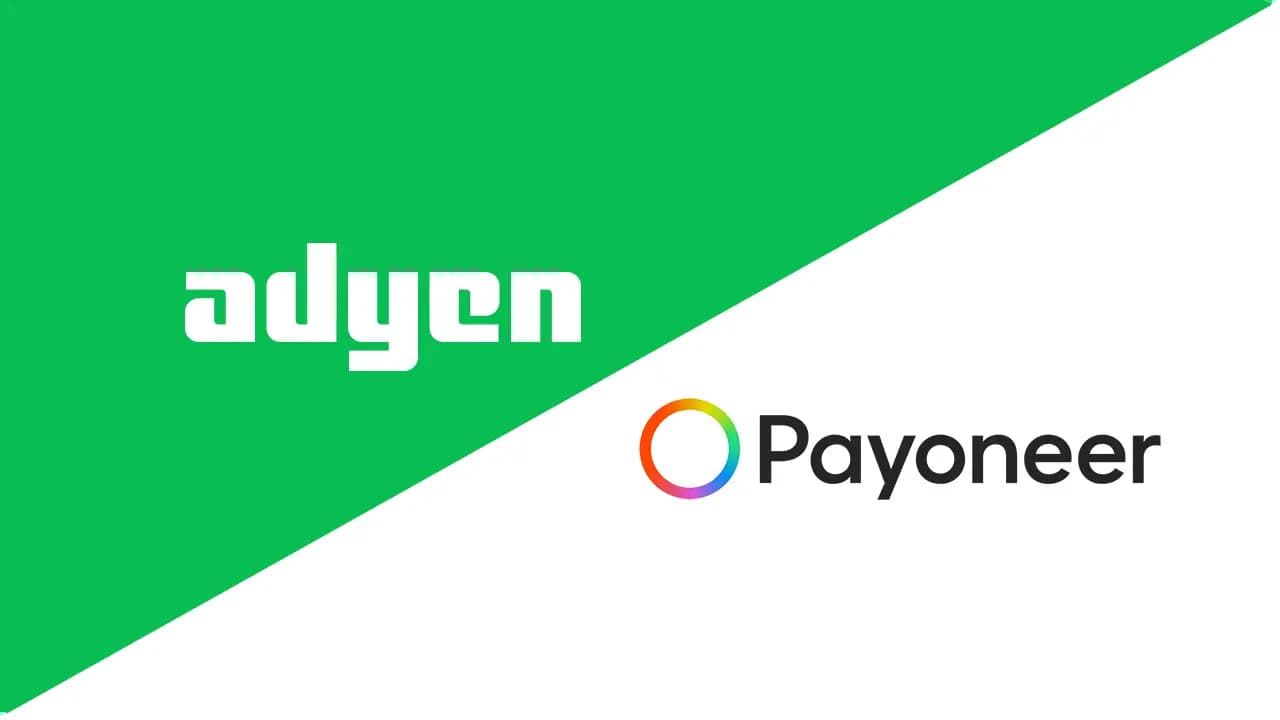
Stripe vs Akurateco: A Comprehensive Report
Key Takeaways
- Stripe excels as a comprehensive payment service provider with developer-friendly APIs, extensive features, and proven scalability from startup to enterprise level
- Akurateco specializes in payment orchestration, offering intelligent routing across multiple providers to optimize approval rates and reduce costs
- Stripe is ideal for businesses prioritizing rapid deployment and unified payment infrastructure, while Akurateco suits organizations needing strategic payment optimization across multiple providers
- The choice depends on whether you value integrated simplicity (Stripe) or strategic flexibility and optimization (Akurateco)
Choose The Best Payment Processing For Your Strategy
When evaluating payment solutions, businesses face a fundamental strategic choice: integrate with a comprehensive payment service provider or leverage a payment orchestration platform that optimizes across multiple providers?
Stripe exemplifies the comprehensive PSP approach, offering end-to-end payment infrastructure through a single, developer-centric platform. Akurateco represents the payment orchestration philosophy, functioning as an intelligent routing layer that optimizes transaction performance across multiple payment providers.
This comparison will help you determine which approach best serves your business objectives and growth plans.
Understanding Payment Infrastructure
A payment gateway functions as the secure bridge connecting customer payment methods to the financial networks that process transactions. It encrypts sensitive payment data, transmits it to processors, and communicates with banks and card networks to authorize and settle payments.
Modern payment gateways extend beyond basic transaction processing to include tokenization for secure data storage, fraud screening capabilities, and support for diverse payment methods including traditional cards, digital wallets, and region-specific payment options.
Integrated payment service providers combine gateway functionality with processing capabilities in a single solution. This approach simplifies implementation and reduces vendor management complexity, though it typically means relying on one provider’s infrastructure and pricing structure.
Payment Orchestration Overview
Payment orchestration platforms add a strategic control layer above traditional gateways and processors. Through a single integration, these platforms connect merchants to multiple payment providers, enabling intelligent transaction routing based on business rules and real-time performance data.
This architecture enables dynamic optimization—routing European transactions to providers with better local rates while directing high-risk transactions to specialized processors. The result is improved authorization rates, reduced costs, and enhanced resilience against provider outages.
Orchestration platforms also simplify global expansion by making it easier to add local payment methods and providers without re-engineering checkout systems. They provide businesses with negotiating leverage and protection against single-provider dependency.
Stripe
Stripe has fundamentally transformed how businesses approach online payments, making enterprise-grade payment infrastructure accessible through intuitive APIs and comprehensive documentation. The platform has evolved from a simple payment processor into a complete commerce infrastructure.
What Is Stripe?
Stripe provides a complete payment infrastructure platform that enables businesses to accept payments online, in-person, and through mobile applications. Founded in 2010 by Irish entrepreneurs Patrick and John Collison, Stripe has grown to serve millions of businesses globally—from individual creators to Fortune 500 companies. The platform abstracts the complexity of payment processing while giving developers extensive customization capabilities.
How Does Stripe Work?
Stripe’s infrastructure handles the complete payment lifecycle. When customers initiate payments, Stripe securely captures and encrypts payment data, performs real-time fraud analysis using machine learning, and routes transactions through banking networks for authorization. The platform automatically handles PCI compliance, reducing regulatory burden for merchants.
What distinguishes Stripe is its developer-first approach. Businesses can accept their first payment using just a few lines of code, then scale to handle millions of transactions without infrastructure changes. Stripe automatically manages the technical complexity while providing detailed analytics and customization options for businesses that need them.
Stripe Features and Pricing
Stripe Features
Stripe offers an extensive suite of payment and business tools:
- Payment processing: Accept payments via credit cards, digital wallets, bank transfers, and 100+ local payment methods
- Subscription billing: Automated recurring billing with flexible pricing models, trial periods, and usage-based billing
- Marketplace payments: Split payment functionality for platforms facilitating multi-party transactions
- Fraud prevention: Machine learning-powered fraud detection with customizable rules and risk scoring
- Global capabilities: Multi-currency support with automatic conversion and local payment method integration
- Developer tools: Comprehensive APIs, SDKs, webhooks, and extensive documentation
- Financial products: Business banking, corporate cards, financing, and treasury management
- Analytics and reporting: Real-time dashboards with detailed transaction insights and business intelligence
Stripe Pricing
Stripe maintains transparent, pay-as-you-go pricing with no setup fees or monthly charges for standard accounts (current as of 8/15/25):
- Online payments: 2.9% + $0.30 per successful transaction
- In-person payments: 2.7% + $0.05 per transaction
- International cards: Additional 1% fee
- Currency conversion: 1% fee when currency conversion is required
Enterprise customers can access custom pricing with volume discounts, negotiated rates, and specialized terms based on transaction volume and specific requirements.
Who Benefits the Most From Stripe?
Stripe Is Best For:
- E-commerce businesses requiring reliable, scalable payment processing
- SaaS companies needing sophisticated subscription billing and customer management
- Marketplaces facilitating payments between multiple parties
- International businesses leveraging global payment method support
- Developer-focused teams wanting extensive API flexibility and customization
- Fast-growing companies that need infrastructure that scales automatically
Ideal Use Cases for Stripe
- Building subscription-based services with complex billing requirements
- Creating marketplace platforms with automated split payments
- Developing mobile applications with seamless in-app purchase flows
- Launching global e-commerce operations with localized payment methods
- Implementing custom payment workflows through extensive API integration
What Customers Say: Reviews of Stripe
Market Perception of Stripe
Stripe consistently receives high ratings from users, though feedback varies depending on business size and complexity requirements.
Pros of Stripe
- Developer experience: Exceptional API design and documentation consistently praised by technical teams
- Reliability: High uptime and consistent performance during peak transaction periods
- Feature completeness: Comprehensive suite of payment and business tools reducing need for multiple vendors
- Global reach: Strong international coverage with local payment methods and compliance
- Innovation: Continuous feature development and early adoption of emerging payment technologies
Cons of Stripe
- Customer support: Some users report challenges accessing timely support during critical account issues
- Account management: Sudden account holds or restrictions can significantly impact business operations
- Pricing complexity: Fee structure can become complex for businesses with diverse transaction types
- Limited customization: Some enterprise customers desire more control over payment routing and provider selection
Akurateco
Akurateco approaches payments from the orchestration perspective, positioning itself as the intelligent layer that optimizes payment performance across multiple providers. The platform emphasizes transparency, flexibility, and global optimization capabilities.
What Is Akurateco?
[Akurateco] (https://www.paytechguide.com/product-details/akurateco) is a payment orchestration platform that connects businesses to multiple payment service providers, acquirers, and alternative payment methods through a unified integration. Rather than processing payments directly, Akurateco intelligently routes transactions to optimize for approval rates, costs, and performance. The platform serves businesses that have outgrown single-provider solutions and need strategic payment optimization.
How Does Akurateco Work?
Akurateco captures payment requests and analyzes them across multiple factors including geography, payment method, transaction amount, and real-time provider performance data. The platform then routes each transaction to the optimal provider based on predefined business rules and machine learning algorithms.
The system continuously monitors transaction outcomes and adjusts routing logic to improve performance over time. If one provider experiences issues or shows declining performance, Akurateco automatically shifts traffic to alternatives, ensuring high availability and optimal results. The platform provides detailed analytics on provider performance, enabling businesses to make data-driven decisions about their payment strategy.
Akurateco Features and Pricing
Features
- Intelligent routing: Dynamic transaction routing based on approval rates, costs, and performance metrics
- Multi-provider connectivity: Connect to numerous PSPs, acquirers, and alternative payment methods
- Global payment methods: Extensive support for local payment methods and currencies worldwide
- White-label solutions: Customizable branding and user interface for seamless customer experience
- Advanced analytics: Real-time reporting on provider performance and transaction insights
- Fraud prevention: Multi-layered security with provider-agnostic fraud detection
- Reconciliation tools: Automated settlement reporting and transaction matching across providers
- API flexibility: Comprehensive APIs for custom integrations and workflow management
Pricing
Akurateco uses a custom pricing model tailored to each merchant’s specific requirements, transaction volumes, and connected provider ecosystem. Pricing typically includes platform fees plus costs from connected payment providers. Specific rates and terms are determined through direct consultation with Akurateco’s sales team.
Who Benefits the Most From Akurateco?
Akurateco Is Best For:
- High-volume businesses seeking payment optimization and cost reduction
- International merchants requiring multi-provider strategies for different markets
- Companies wanting to avoid single-provider dependency and vendor lock-in
- Businesses with complex payment requirements needing customizable routing logic
- Organizations prioritizing payment performance optimization over simplicity
Ideal Use Cases for Akurateco
- Expanding into new international markets with optimized local payment strategies
- Building payment resilience through multi-provider backup and failover capabilities
- Optimizing transaction costs and approval rates through intelligent provider selection
- Managing complex payment flows for enterprise-level operations
What Customers Say: Reviews of Akurateco
Market Perception of Akurateco
Akurateco receives positive feedback for its optimization capabilities and flexibility, though users note the platform requires more technical expertise than single-provider solutions.
Pros of Akurateco
- Performance optimization: Users report measurable improvements in approval rates and cost reduction
- Provider flexibility: Freedom from vendor lock-in with ability to negotiate with multiple providers
- Global capabilities: Strong support for international markets and local payment methods
- Customization: Extensive configuration options for routing logic and business rules
- Transparency: Clear visibility into provider performance and transaction routing decisions
Cons of Akurateco
- Implementation complexity: More involved setup process requiring payment orchestration expertise
- Learning curve: Platform requires understanding of multi-provider payment strategies
- Brand recognition: Less market awareness compared to established PSPs like Stripe
- Support variability: Customer service quality can vary, particularly during initial implementation
Financial & Market Insights
Key Financial Metrics: As of 2024, Stripe processes $1.4 trillion in annual transaction volume, representing 38% year-over-year growth and serving millions of businesses worldwide. Akurateco serves a growing base of enterprise merchants globally, with the platform claiming to approve up to 30% more transactions through advanced routing features.
Market Position and Growth Trends: Stripe dominates the developer-friendly PSP market with strong growth in e-commerce, SaaS, and marketplace businesses. Akurateco is gaining traction in the payment orchestration segment, particularly among businesses seeking multi-provider optimization strategies.
Industry Evolution: The payments industry is experiencing significant growth, with various market research firms projecting the global digital payments market to reach between $3-20 trillion by 2026-2030, depending on methodology and scope. Both single-provider convenience and multi-provider optimization strategies have important roles in different business contexts as the market evolves.
Feature Comparison
| Feature | Stripe | Akurateco |
|---|---|---|
| Billing & Invoicing | ✅ | ✅ |
| Currency Support | ✅ | ✅ |
| Customizable Branding | ⚠️ | ✅ |
| Deployment Flexibility | ✅ | ✅ |
| Fraud Tooling | ✅ | ✅ |
| Integration Capabilities | ✅ | ✅ |
| Management Tools | ✅ | ✅ |
| Payment Types Support | ✅ | ✅ |
| Reconciliation Tools | ✅ | ✅ |
| Reporting & Analytics | ✅ | ✅ |
| Security & Compliance | ✅ | ✅ |
| Smart Routing | ❌ | ✅ |
| Split Payments | ✅ | ✅ |
| Payment Method Variety | ✅ | ✅ |
| Tokenization | ✅ | ✅ |
| Vaulting | ✅ | ✅ |
Note: Some Stripe offer limited customization options.
Strengths
Stripe
- Complete infrastructure: End-to-end payment solution reducing vendor management complexity
- Developer ecosystem: Industry-leading API design with comprehensive documentation and community support
- Proven scalability: Infrastructure that automatically scales from startup to enterprise volumes
- Innovation leadership: Continuous development of new features and payment capabilities
- Global reach: Extensive international coverage with local payment methods and compliance
- Brand trust: Established reputation and reliability in the payments industry
Akurateco
- Performance optimization: Platform claims to approve up to 30% more transactions through intelligent routing capabilities
- Provider flexibility: Multi-provider connectivity preventing vendor lock-in and enabling negotiation leverage
- Customization depth: Extensive configuration options for routing logic and business rules
- Global strategy: Strong support for international expansion with local payment optimization
- Performance transparency: Clear visibility into provider performance and routing decisions
- Cost efficiency: Claims potential cost savings of up to 50% of processing costs through optimized provider selection
Weaknesses
Stripe
- Single provider dependency: Reliance on Stripe’s infrastructure and policies for all payment processing
- Limited optimization: No ability to route transactions across multiple providers for optimal performance
- Account management risks: Sudden account restrictions can significantly impact business operations
- Pricing inflexibility: Standard pricing without ability to optimize costs through provider competition
Akurateco
- Implementation complexity: More sophisticated setup requiring payment orchestration expertise
- Technical requirements: Platform demands deeper technical understanding than single-provider solutions
- Market recognition: Less brand awareness compared to established PSPs
- Support consistency: Variable customer service quality across different client segments
- Integration overhead: Managing multiple provider relationships can increase operational complexity
Final Summary & Recommendation
The choice between Stripe and Akurateco depends on your business priorities, technical capabilities, and growth stage:
Key Reasons to Choose Stripe:
- Rapid deployment: When speed to market is critical and you need comprehensive payment capabilities quickly
- Unified infrastructure: If you prefer managing a single vendor relationship with extensive built-in features
- Developer focus: When your team values exceptional APIs, documentation, and development tools
- Brand confidence: For businesses prioritizing established reliability and market reputation
- Complete solution: When you need billing, fraud prevention, and analytics integrated in one platform
Key Reasons to Choose Akurateco:
- Performance optimization: When improving approval rates and reducing processing costs are primary objectives
- Strategic flexibility: If avoiding vendor lock-in and maintaining provider optionality are important
- Global complexity: For businesses with sophisticated international payment requirements
- Cost optimization: When transaction volumes justify the complexity of multi-provider management
- Custom routing: If you need specific business rules for transaction routing and provider selection
Situational Recommendations:
- For growing e-commerce and SaaS businesses: Stripe provides the integrated infrastructure and developer experience needed for rapid scaling
- For enterprise organizations with high volumes: Akurateco offers the optimization capabilities and strategic flexibility required for sophisticated payment strategies
- For international expansion: Both platforms support global markets, but Akurateco’s multi-provider approach may offer better local optimization
- For startups and mid-market companies: Stripe’s simplicity and comprehensive features typically provide better value and faster time-to-market
The decision ultimately comes down to whether you prioritize integrated simplicity (Stripe) or strategic optimization (Akurateco) based on your business model, technical capabilities, and long-term payment strategy objectives.





